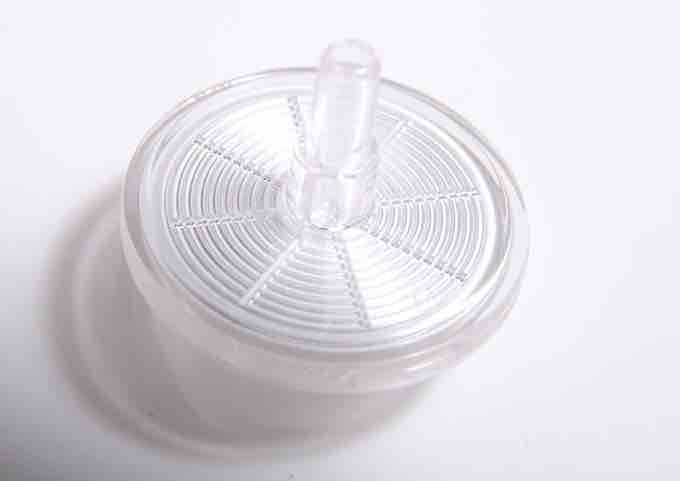Fluids that would be damaged by heat (such as fluids containing proteins like large molecule drug products, but also wine and beer), irradiation, or chemical sterilization can only be sterilized by microfiltration using membrane filters. This method is commonly used for heat labile pharmaceuticals and for protein solutions in processing medicines.
The typical microfiltration membrane pore size range is 0.1-10 µm, with the most commonly used being 0.2 µm ; and 0.45 µm is sufficient to eliminate bacteria and fungi.

Syringe Filter
A syringe filter with a pore size of 0.22 micrometers, small enough to capture and retain bacterial and fungal cells.
Microfiltration is increasingly used in drinking water treatment. It effectively removes major pathogens and contaminants such as Giardia lamblia cysts, Cryptosporidium oocysts, and large bacteria. For this application, the filter has to be rated for 0.2 µm or smaller pore size.
Quite often when biological samples are processed, viruses must be removed or inactivated. Nanofilters with smaller pore sizes of 20-50 nm (nanofiltration) are used. The smaller the pore size, the lower the flow rate. To achieve higher total throughput or avoid premature blockage, pre-filters might be used to protect small pore membrane filters. Some studies have shown that prions can be removed or reduced by filtration.
Membrane filters used in production processes are commonly made from materials such as mixed cellulose ester or polyethersulfone. The filtration equipment and the filters may be purchased as pre-sterilized disposable units in sealed packaging, or must be sterilized by the user, generally by autoclaving at a temperature that does not damage the fragile filter membranes. To ensure proper functioning of the filter, the membrane filters are integrity tested post-use or sometimes pre-use. A non-destructive integrity test assures the filter is undamaged, and is also a regulatory requirement enforced by agencies like the Food and Drug Administration, the European Medicines Agency, and others.